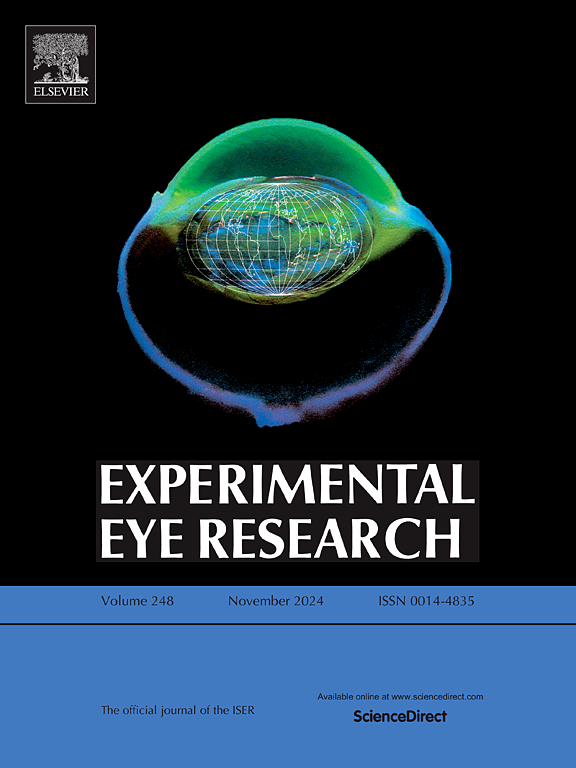Targeting BMP4 as a therapeutic strategy for neovascularization and fibrosis in age-related macular degeneration
IF 3
2区 医学
Q1 OPHTHALMOLOGY
引用次数: 0
Abstract
This study investigates the role of bone morphogenetic protein-4 (BMP4) in age-related macular degeneration (AMD), with a focus on its effects on subretinal fibrosis and choroidal neovascularization (CNV). Using a mouse model of laser-induced CNV, we found that BMP4 expression was significantly elevated in CNV lesions. BMP4 was shown to promote fibroblast proliferation and their differentiation into myofibroblasts, as indicated by increased expression of α-smooth muscle actin (α-SMA). Additionally, BMP4 promoted the transition of endothelial progenitor cells (EPCs) into endothelial cells (ECs), a process that was modulated by mitochondrial function. Intravitreal administration of Noggin, a BMP4 inhibitor, significantly reduced CNV lesion volume and decreased the expression of CD31 and α-SMA, suggesting a decrease in neovascularization and fibrosis. These findings underscore BMP4's critical role in AMD pathogenesis by driving both angiogenesis and fibrosis. Targeting BMP4 with Noggin presents a promising therapeutic approach for AMD, addressing both neovascularization and fibrosis in a single intervention, and highlights BMP4 as a potential novel target for AMD therapy.
靶向BMP4作为老年性黄斑变性新生血管和纤维化的治疗策略
本研究探讨了骨形态发生蛋白4 (BMP4)在年龄相关性黄斑变性(AMD)中的作用,重点研究了其对视网膜下纤维化和脉络膜新生血管(CNV)的影响。使用激光诱导的小鼠CNV模型,我们发现BMP4在CNV病变中表达显著升高。通过α-平滑肌肌动蛋白(α-SMA)的表达增加,BMP4可促进成纤维细胞增殖并向肌成纤维细胞分化。此外,BMP4促进内皮祖细胞(EPCs)向内皮细胞(ECs)的转变,这一过程受线粒体功能调节。玻璃体内给予BMP4抑制剂Noggin,可显著减少CNV病变体积,降低CD31和α-SMA的表达,提示新生血管和纤维化减少。这些发现强调了BMP4通过驱动血管生成和纤维化在AMD发病机制中的关键作用。用Noggin靶向BMP4为AMD提供了一种很有前景的治疗方法,在一次干预中同时解决新生血管和纤维化问题,并突出了BMP4作为AMD治疗的潜在新靶点。
本文章由计算机程序翻译,如有差异,请以英文原文为准。
求助全文
约1分钟内获得全文
求助全文
来源期刊

Experimental eye research
医学-眼科学
CiteScore
6.80
自引率
5.90%
发文量
323
审稿时长
66 days
期刊介绍:
The primary goal of Experimental Eye Research is to publish original research papers on all aspects of experimental biology of the eye and ocular tissues that seek to define the mechanisms of normal function and/or disease. Studies of ocular tissues that encompass the disciplines of cell biology, developmental biology, genetics, molecular biology, physiology, biochemistry, biophysics, immunology or microbiology are most welcomed. Manuscripts that are purely clinical or in a surgical area of ophthalmology are not appropriate for submission to Experimental Eye Research and if received will be returned without review.
 求助内容:
求助内容: 应助结果提醒方式:
应助结果提醒方式:


